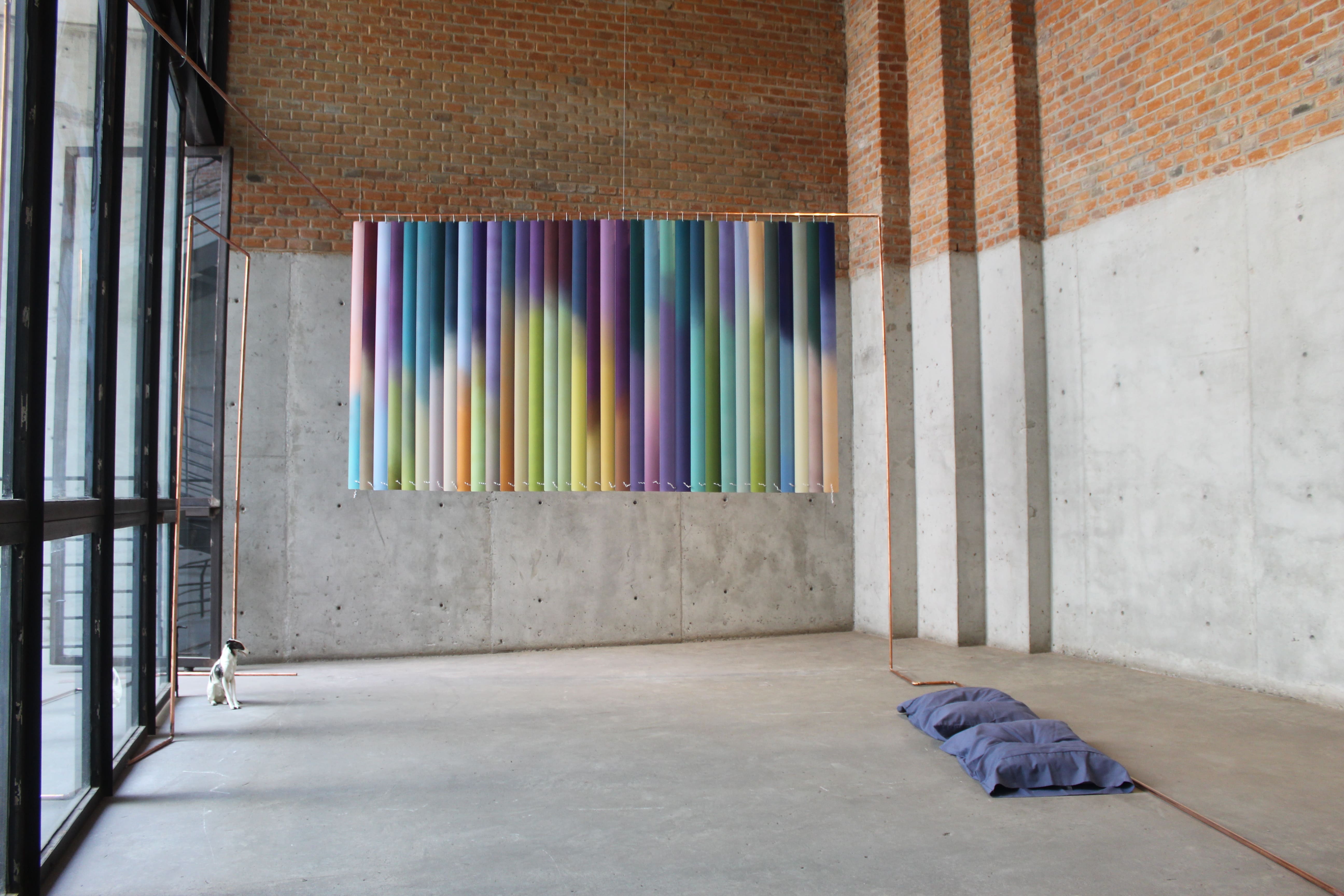In the heart of Madrid's Malasaña neighborhood, there's a first-floor studio on Calle Valverde that you'd never imagine what's inside. Almost 200 square meters of canvases. Walls completely covered in paint, materials, and paintings over 20 years old are the creative journey of Papartus, aka "Paco."
Closed windows, laboratory lighting. Whatever least interferes with the perception of what one sees when standing in front of a canvas and seeking to engage in conversation with it.
Papartus (Burgos, 1956) is one of the few artists in Spain who dare to use a pseudonym. For him, it's a way to stay connected to his childhood and that innate ability we all possess to explore and create without fear before we reach adulthood. A painter and visual artist based in Madrid for more than three decades, his career has not been indifferent to numerous galleries, fairs, and the national and international press.

"I painted like all children paint, but I took it more seriously."
They say that art is that which impacts you and that you cannot forget. It was with Michelangelo's Moses basket that Papartus connected with art. A need to express himself with his hands and the essence he holds within. "I couldn't say when, but I've continued painting my whole life. It's been my obsession."

Painting as a material
When Inés Alonso, art curator and art seeker, asks Paco about when he transitioned from longing to paint figurative representations like Michelangelo's Moses to focusing on abstraction, Paco defends his love for painting and not for storytelling: "If I want to know a story, maybe I prefer to read a book and have it told to me, rather than look at a painting. There comes a time when my love was already for painting, not for storytelling."
"My love was for painting. Paint is its texture, when it splashes, when it cracks, when it slides, when it shines, when it mixes, which is sensuality. If there is anything to painting, it is sensuality."



In Papartus's artistic and pictorial exploration, there is no room for literal narration, for the predictable and stipulated. "...I don't want to tell anything with my painting [...] What interests me is the adventure of painting. "
Inés accompanies him: " Well, true abstraction is about that, about losing yourself in the field of color rather than interpreting forms that aren't there." 

Within the walls of his studio, where he almost always produces his work, there is as much room for canvases as there is for doubt. Not from a negative interpretation of arbitrariness, but quite the opposite. It is in the voids and undefined spaces we find within ourselves that Papartus innately turns to find his channel of expression. His connection with painting is such that he firmly defends the need to listen to the painting. "When you're immersed in a series and have already done more than 10 or 15, I erase, go back to the studio, and start to see what happens. And it comes, somehow it comes. It told me a lot about what the painting commands."

When Inés talks about the importance of creating authentically, Papartus accompanies her:
"We've all had grandparents and parents, and it's impossible to be an artist without knowing that. But what's impossible is having a world that's different from everyone else's."


Credits:
Interview: Inés Alonso and Romina Llaguno
Video: Rosana Pérez and Romina Llaguno
Photography: María Viñas
Thanks to Paco "Papartus" and Arma Gallery


